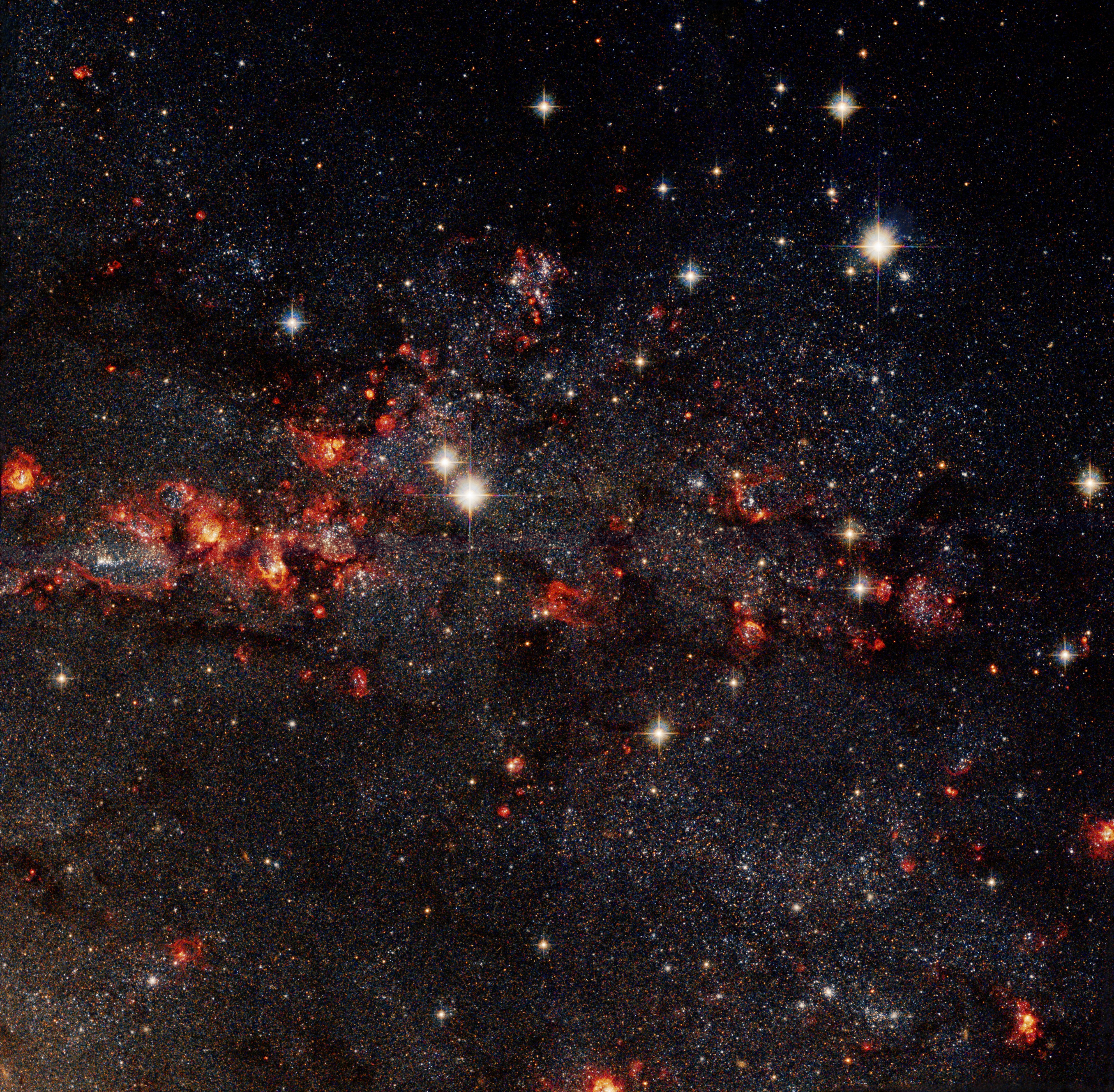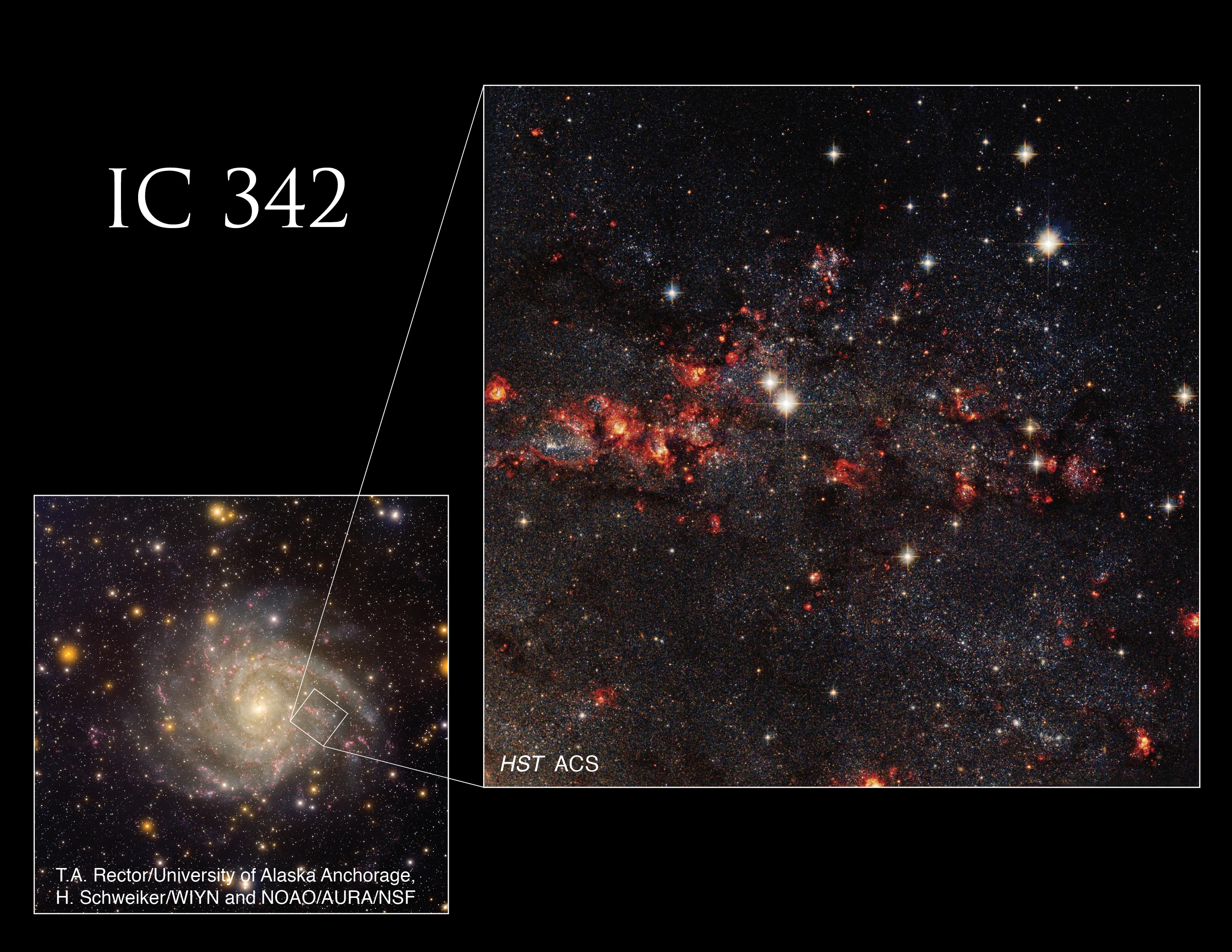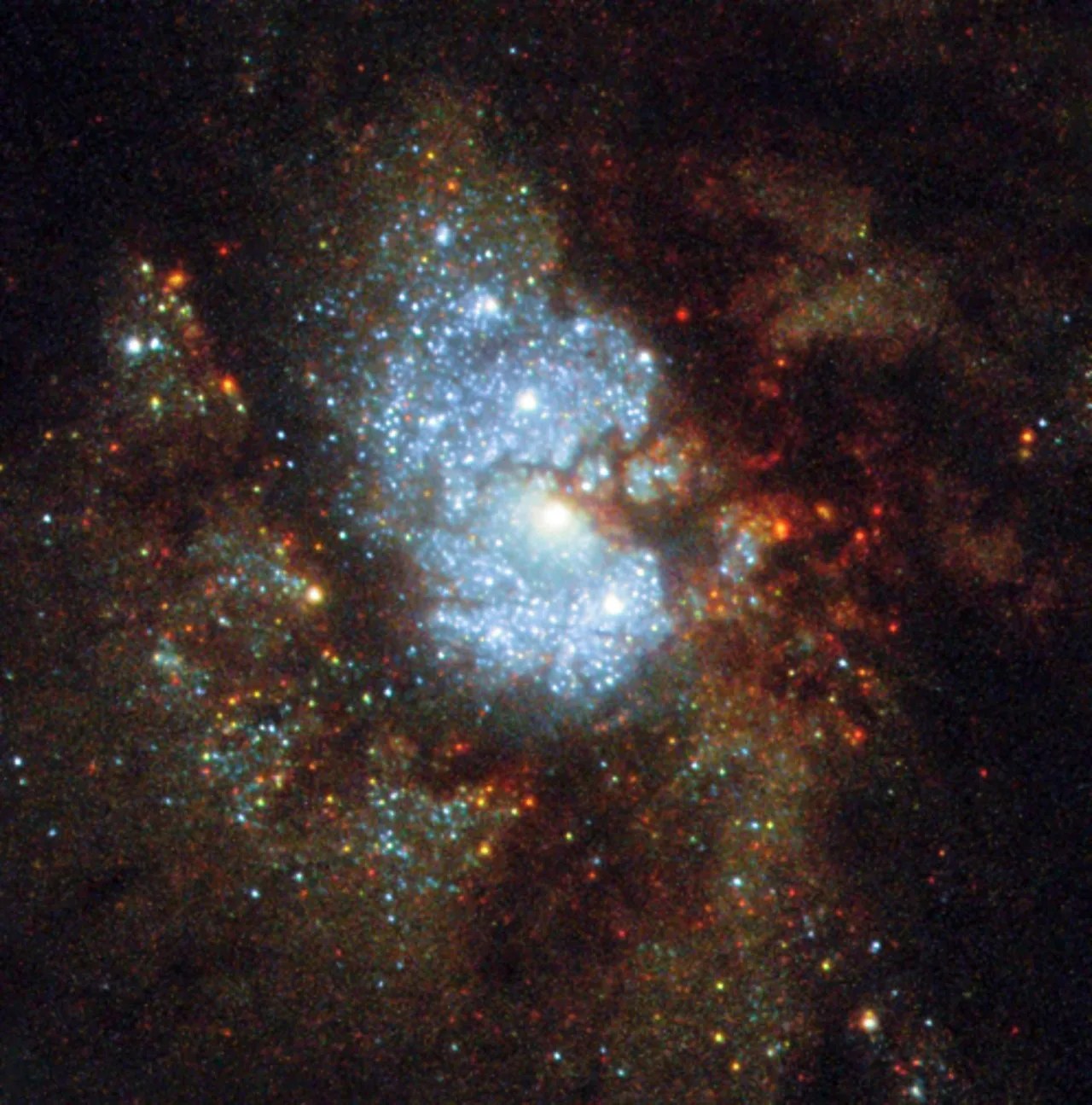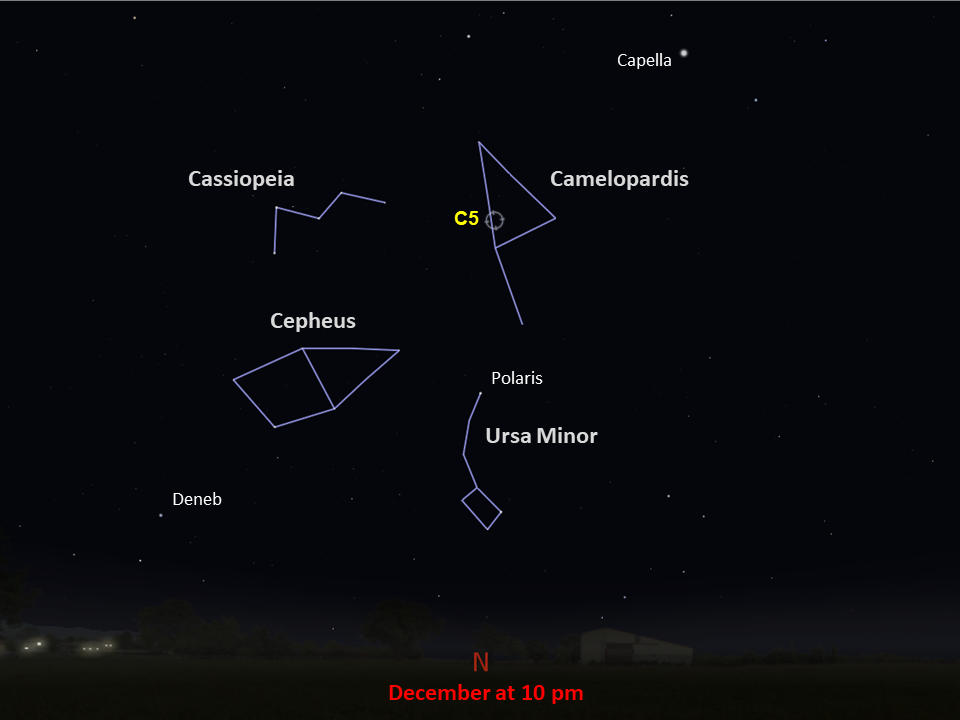Caldwell 5
Though bright, this spiral galaxy is very difficult to find in the crowded sky area near the Milky Way's disk of gas, dust, and stars.
Distance
11 million light-years
Apparent Magnitude
8.4
constellation
Camelopardalis
object type
Spiral Galaxy

Caldwell 5, also known as IC 342, is a spiral galaxy located approximately 11 million light-years from Earth. Despite its 8.4 magnitude, Caldwell 5 is very difficult to find in the sky. The galaxy appears near the equator of the Milky Way’s pearly disk, which is crowded with thick cosmic gas, dark dust, and glowing stars that all obscure our view. Therefore, in order to distinguish the intricacies of Caldwell 5 through a telescope, astronomers must peer through light-years of space chock-full of visual hindrances. This has earned Caldwell 5 the nickname of the Hidden Galaxy.
Were it not obscured by so much interstellar matter, the Hidden Galaxy would be one of the brightest galaxies in our sky. A relatively close galaxy, it is roughly 50,000 light-years across and billions of years old. Its face-on alignment makes it a prime target for possible supernova sightings, but so far, scientists have seen none.

Caldwell 5 was discovered in the early 1890s by William Frederick Denning, a British amateur astronomer who had practically no formal scientific training yet still managed to achieve a great amount of success in astronomy (discovering several comets, publishing more than a thousand scholarly articles, and winning the Gold Medal of the Royal Astronomical Society). The best time of year to look for Caldwell 5, which is located in the constellation Camelopardalis, is during late autumn and early winter in the Northern Hemisphere. In the Southern Hemisphere, only those located close to the equator will have a chance to spot it low in the northern sky during late spring or early summer. True to its name, the Hidden Galaxy can be difficult to find, especially if your sky is light polluted or even slightly cloudy or hazy. Wait for the clearest of nights and travel away from city lights to search for it with a telescope.

The image above, of the center of Caldwell 5, is a combination of visible and ultraviolet observations captured by Hubble’s Wide Field Camera 3. This core is a specific type of region called an H II nucleus – an area of atomic hydrogen that has become ionized. Such regions are energetic birthplaces of stars where thousands of stars can form over a couple million years. Each young, extremely hot, blue star emits ultraviolet light, further ionizing the surrounding hydrogen. Astronomers used Hubble’s observations to learn more about the stars clustered at the center of this galaxy.

Glossary
Comet - A relatively small, icy body orbiting the Sun (or another star), often producing a tail when approaching the Sun (or star).
Ionization - The process by which particles become electrically charged; radiation from various astronomical sources, such as stars, can charge surrounding gases with electromagnetic radiation, causing these clouds of gas to glow.
Magnitude - The brightness of an astronomical object, represented by a number; bright objects have low numbers on the magnitude scale, while dim objects have high numbers.
Nebula - An interstellar cloud of dust and gas; either a location where new stars are being forged or a cloud of material ejected into space by a dying star.
Spiral Galaxy - A galaxy characterized by its spiral structure, with star-filled arms that extend out from the center of the galaxy and host regions of star formation.
Supernova - The explosion of a massive star at the end its life, which ejects material into space and causes the star to temporarily brighten in our sky.
Explore Hubble's Caldwell Catalog
The following pages contain some of Hubble’s best images of Caldwell objects.

Caldwell 1
Also known as NGC 188, this group of stars formed from a large cloud of gas making the stars roughly…

Caldwell 2
This shell of gas is expanding outward, away from the dying star within.

Caldwell 3
This barred spiral galaxy was first spotted by British astronomer William Herschel in April 1793 in the constellation Draco.




